The Limerick pogrom, 1904
Published in 20th Century Social Perspectives, 20th-century / Contemporary History, Features, Issue 2 (Summer 2004), Volume 12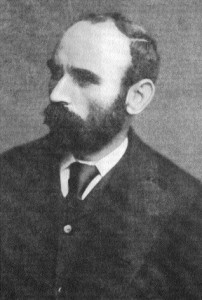
Michael Davitt and John Redmond, the only two people of national standing to speak out in condemnation.
Kevin Haddick Flynn outlines the background to and the course of an incident that sharply divided public opinion.
This year marks the hundredth anniversary of the only anti-Jewish pogrom to take place on Irish soil—that which occurred in Limerick in the early months of 1904. The outrage divided public opinion, but only two people of national standing spoke out in condemnation—Michael Davitt, the hero of the Land War of twenty years earlier, and John Redmond, leader of the Irish Parliamentary Party.
On learning that a Redemptorist priest in Limerick had delivered a virulent anti-Jewish sermon, Davitt said:
‘I protest as an Irishman and as a Catholic against the barbarous malignancy of anti-semitism which is being introduced into Ireland under the pretended regard for the welfare of the Irish people.’
Earlier, he had investigated a pogrom in Kishinev in the Russian province of Bessarabia (present-day Moldova) and had written a scathing article for the New York magazine The American censuring the Tsarist regime for its treatment of the Jews. While the Limerick pogrom was small in comparison with the wave of anti-Jewish violence that swept across Russia, it is only against this background that it may be understood.
Protocols of the Learned Elders of Zion
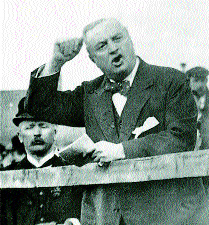 Following the final partition of Poland in 1815 the vast majority of European Jews found themselves inside the boundaries of the Russian Empire. They were unloved and unwanted by the tsars and harsh measures were frequently taken against them. Forced to live within the ‘pale of settlement’, a zone which lay between Lithuania in the north and the Black Sea to the south, they were demonised as ‘Christ-killers’ and accused of such fabrications as the notorious ‘blood libel’, which charged them with abducting and killing Christian children and using their blood in their rituals.
Following the final partition of Poland in 1815 the vast majority of European Jews found themselves inside the boundaries of the Russian Empire. They were unloved and unwanted by the tsars and harsh measures were frequently taken against them. Forced to live within the ‘pale of settlement’, a zone which lay between Lithuania in the north and the Black Sea to the south, they were demonised as ‘Christ-killers’ and accused of such fabrications as the notorious ‘blood libel’, which charged them with abducting and killing Christian children and using their blood in their rituals.
Around 1850 the accusations against the Jews widened: they were identified with the rise of capitalism and the money-grabbing deals that were deemed to go with it. Also, and paradoxically, they were seen as purveyors of radical ideologies which themselves were designed to overthrow the capitalist system! Additionally, the new and strident nationalism then rife in Europe portrayed them as rootless cosmopolitans who gave no allegiance to their countries of settlement but who exploited workers and peasants alike.
It was no surprise that the most virulent strain of anti-Semitism arose in Russia, and it reached unprecedented heights during the reign of Tsar Nicholas II, when his secret police tried to clamp down on the growing revolutionary movement. Determined to stem the tide of revolt, his agents produced the notorious Protocols of the Learned Elders of Zion, a fabricated document that purported to be the minutes of a secret meeting held by a group of powerful Jews who planned to take over the world. Their strategy was clear: to destabilise existing governments mainly by the promotion of socialism, liberalism and freemasonry, and then, when disorder had set in, to use their financial strength to seize power.
Although the Protocols were exposed as a clumsy forgery, they were astonishingly successful; they were translated into every major language and even today are still in print and widely believed. In Ireland some conservative Catholics expressed their faith in them, and in America the car manufacturer Henry Ford as late as 1921 promoted them, saying, ‘The only statement I can make about the Protocols is that they fit in with what is going on’.
The Arch Confraternity
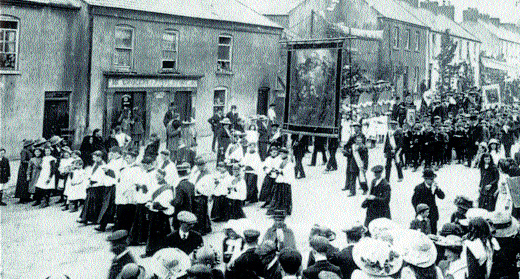 Some of the fiercest Russian pogroms occurred in 1881, 1882 and 1903—the last being the most bloody, with over 3,000 Jews losing their lives. Whole communities fled to the West, keeping largely together. Those who ended up in Ireland were principally from Lithuania. Most of the Limerick Jews came from the village of Akmijan in the Kovno Gubernia province, and those who settled in Cork were from a neighbouring village. Among the first to arrive was Louis Goldberg, whose family later became prominent merchants in Cork; he landed in Cobh and walked to Dublin in search of prospects.
Some of the fiercest Russian pogroms occurred in 1881, 1882 and 1903—the last being the most bloody, with over 3,000 Jews losing their lives. Whole communities fled to the West, keeping largely together. Those who ended up in Ireland were principally from Lithuania. Most of the Limerick Jews came from the village of Akmijan in the Kovno Gubernia province, and those who settled in Cork were from a neighbouring village. Among the first to arrive was Louis Goldberg, whose family later became prominent merchants in Cork; he landed in Cobh and walked to Dublin in search of prospects.
He said that the peasants whom he met were living in grinding poverty but were unstintingly hospitable towards him. In Dublin he acquired a peddler’s licence, purchased a small stock of religious pictures—of saints and popes—and returned to Cork on foot, selling his merchandise along the way.
Limerick at the time was wretchedly poor and the arrival of a group of ragged newcomers promised trouble. There was little money in the city and because it was a garrison town many of its menfolk were away fighting the Boers. In many cases their wives and children were virtually on the breadline. The Jews became known as moneylenders and significant numbers became indebted to them.
In 1904 there were roughly 35 Jewish families, about 150 people, in the Limerick urban area. They lived in Colooney Street (now Wolfe Tone Street), not far from the present-day O’Connell monument, and had established a Jewish burial-ground at Kilmurray, near Castleconnell. The first attack on them came in January, when, following a colourful Jewish wedding, a Judge Adams commented on their commercial success and vibrancy. This led to a sour report in the Limerick Leader, which compared their prosperity to the poverty of the native population. A few days later the matter was taken up by Fr John Creagh CSSR, spiritual director of the Arch Confraternity of the Sacred Heart, which had a membership of around 6,000.
From the pulpit Fr Creagh stated:
‘The Jews were once chosen by God. But they rejected Christ, they crucified Him. They called down the curse of His precious blood on their heads . . . They were scattered over the earth after the Siege of Jerusalem in 70 AD, and they bore away with them an unquenchable hatred for the name of Jesus Christ and his followers . . . The Jews came to Limerick apparently the most miserable tribe imaginable, with want on their faces, and now they have enriched themselves and can boast a very considerable house property in the city. Their rags have been exchanged for silk . . . How do the Jews manage to make their money? Some of you may know their methods better than I do, but it is still my duty to expose these methods. They go about as peddlers from door to door, pretending to offer articles at very cheap prices, but in reality charging several times more than in the shops . . . They forced themselves and their goods upon the people and the people are blind to their tricks . . .’
The pogrom
This bile and brimstone sermon had its effect. Large numbers from the Arch Confraternity launched an attack on the Jewish sector of the city, pelting the Jews with mud, breaking windows and throwing stones. The police moved in and eleven were arrested and later prosecuted, but it was estimated that at least 200 had behaved violently. At the trial of the eleven, Michael Davitt’s protest was read out, only to be dismissed by the defending solicitor, John Nash, as an unwarranted intervention by an outsider. Nash claimed that the events were exaggerated. But in fact they had only set the ball rolling.
Fr Creagh again rocked the pulpit. He deprecated violence, he said, but if the citizens of Limerick wanted to end Jewish extortion they should boycott Jewish commerce. This cry was echoed in the Limerick Leader and taken up by the Irish Independent. Arthur Griffith, who was shortly to found Sinn Féin, added his voice in favour of a boycott. To the Jews a boycott was almost as pernicious as the violence, as it hit their means of livelihood. Besides, some people were wilfully reneging on their debts and the Jews were unable to collect because of threats and intimidation. The boycott was solidly supported, though some said that they found the Jews’ trading terms reasonable and were only driven into complicity by their neighbours and the authority of Fr Creagh.
After a lull, the violence flared again in March; in April there were 40 attacks on the Jews and the anti-Semitic stridency of the Arch Confraternity continued. The pogrom received wide coverage and on 4 April The Times in London published a letter supporting the anti-Jewish drive. A number of English people sent moral support to the activists through the correspondence columns of the Limerick Leader. One was Alfred Walmsley of the British League of Brothers, based in Stepney. He said that he regretted that English workers had not copied the initiative taken by the citizens of Limerick. Before the year was out his organisation had fomented an ugly riot in London’s East End.
The bishops and the corporation
The Arch Confraternity did not regret the turn of events. At one of its meetings it passed a resolution:
‘We tender to Fr Creagh our very best wishes on his recent lectures on the ways and means of Jewish trading and at this meeting representing 6,000 members of the Confraternity we express our full confidence in his views’.
One of the leading Jews in Limerick, Saul Goldberg, led a delegation to the Catholic bishop, Dr Edward O’Dwyer, to seek his support in quelling the pogrom. Dr O’Dwyer was responsive; he denounced the anti-Jewish mobs and made his views known to the diocesan clergy, but this had little effect on Fr Creagh who, as a Redemptorist, was subject to his own superior general and not to the local bishop.
A stronger condemnation came from Dr Thomas Bunbury, the Church of Ireland bishop. But the mayor and corporation took exception to his remarks; they said that he had taken his information from ‘a contaminated source’ and passed a motion:
‘We condemn and repudiate in the most emphatic manner the attack made by Dr Bunbury on the good name of this city, which we consider unjustified and uncalled for’.
A further dig at the bishop was made in an editorial in The Munster News:
‘Let Bishop Bunbury behave himself. The days are gone when a Papist, ridden over by a Protestant fox-hunter, should crawl hat-in-hand to beg his honour’s pardon for having been in the horse’s way’.
The Rahilly case
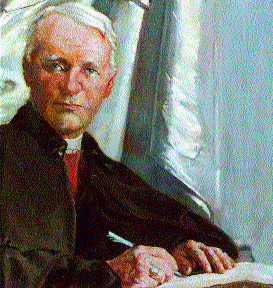
Bishop Edward Dwyer denounced the anti-Jewish mobs but had little control over the Redemptorist Fr Creagh, who was outside his jurisdiction. (Limerick Municipal Art Gallery)
An indication of the corporation’s views was given when a youth named Rahilly was brought to court. He was found guilty of stoning a rabbi, Elias Levin, and sentenced to a month in jail. The corporation petitioned the lord lieutenant for his release. The petition was rejected, and when Rahilly returned to Limerick after incarceration in Mountjoy he was greeted by a vast crowd, presented with a gold watch and chain, and carried shoulder-high from Limerick station.
The boycott quickly took its toll on the livelihood of the Jews. One by one they began to leave Limerick, heading mostly for England. Max Bland, a grocer, one of their leaders, and the rabbi Elias Levin put out feelers to re-establish harmonious relations but were impolitely rebuffed. Bland offered to open the ledgers of all the Jewish traders to show that their profits were not excessive; the rabbi pointed out that of the 1,387 summonses issued at Limerick courthouse in 1903, only 31 could be connected with the Jews. But the boycott continued until October, by which time only half a dozen Jewish families remained in Limerick. Although a contemptible and shameful episode, the pogrom had one providential outcome: there were no fatalities.
The tragedy and the loss
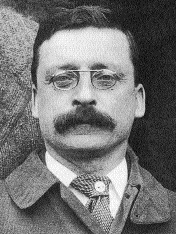 The tragedy was that the pogrom locked in combat two deprived communities who had experienced hardship. The pity was that it denied to Limerick some of its most industrious citizens. Saul Goldberg went on to become a leading Zionist and an associate of Chaim Weizmann, first president of Israel; his brother, Louis Goldberg, became one of the leading businessmen in Cork; David Marcus, the novelist and former literary editor of the Irish Press, and Louis Marcus, the film director, were sons of refugees from the Limerick pogrom.
The tragedy was that the pogrom locked in combat two deprived communities who had experienced hardship. The pity was that it denied to Limerick some of its most industrious citizens. Saul Goldberg went on to become a leading Zionist and an associate of Chaim Weizmann, first president of Israel; his brother, Louis Goldberg, became one of the leading businessmen in Cork; David Marcus, the novelist and former literary editor of the Irish Press, and Louis Marcus, the film director, were sons of refugees from the Limerick pogrom.
The pogrom was exceptional in Irish history. Jewish people generally integrated without difficulty into Irish society, and their freedoms were explicitly guaranteed by the constitutions of 1923 and 1938. On 1 January 1938 when Bunracht na hÉireann came into effect a senior Irish rabbi, Dr A. Gudansky, said:
‘We Jews have, indeed, good cause to rejoice in the happiness and well-being of the Irish people, for in the words of the Psalmist: “our lives have fallen in happy places”. Providence, in its mercy, has thrown in our lot with a people whose creeds of faith and liberty shine forth brilliantly from the annals of its sad and glorious history—a people that may justly take pride in the fact that not a drop of innocent Jewish blood has ever been shed on its soil.’
Kevin Haddick Flynn is a London-based writer and lecturer.
Further reading:
M. Davitt, Within the Pale: the story of anti-Semitism in Russia (London, 1903).
T. Hyman, The Jews of Ireland: from the earliest times to the year 1910 (Shannon, 1972).
D. Keogh, Jews in twentieth century Ireland (Cork, 1998).
















